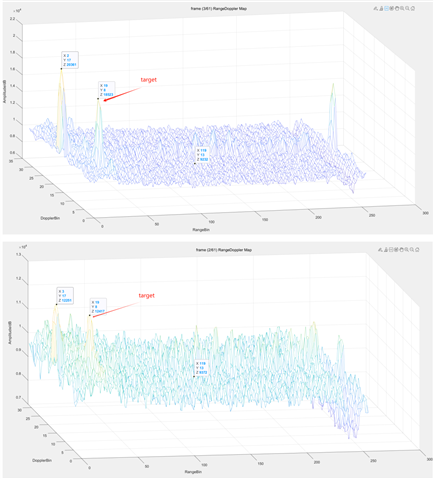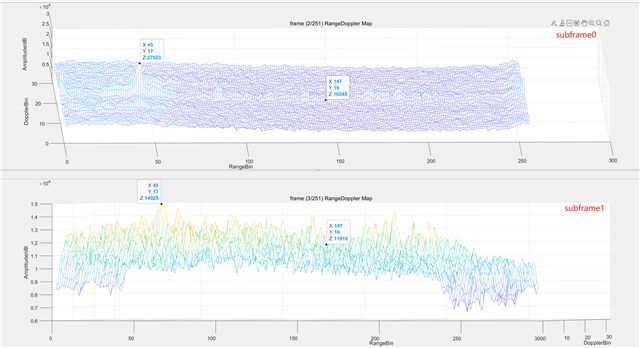Other Parts Discussed in Thread: AM2732,
Tool/software:
1. AM2732+2243 dual chip cascaded advanced frame mode (DDM); DDM
2. Parameter configuration
profileCfg 0.0000 78.0000 5.0000 5.0000 20.0000 0.0000 0.0000 11.0000 0.0000 256.0000 20000.0000 0.0000 0.0000 30.0000
profileCfg 1.0000 78.0000 5.0000 5.0000 20.0000 0.0000 0.0000 11.0000 0.0000 256.0000 20000.0000 0.0000 0.0000 30.0000
chirpCfg 0.0000 7.0000 0.0000 0.0000 0.0000 0.0000 0.0000 7.0000
chirpCfg 8.0000 15.0000 1.0000 0.0000 0.0000 0.0000 0.0000 7.0000
subFrameCfg 0.0000 0.0000 0.0000 8.0000 32.0000 200.0000 0.0000 1.0000 1.0000 200.0000
subFrameCfg 1.0000 0.0000 8.0000 8.0000 32.0000 200.0000 0.0000 1.0000 1.0000 200.0000
subDataFrameCfg 0.0000 256.0000 256.0000 1.0000
subDataFrameCfg 1.0000 256.0000 256.0000 1.0000
3. Question:
In the darkroom test, the target was at 21m, and radar RD data was collected. Using Matlab to plot, Z in the figure represents the amplitude;it was found that there was a significant difference in signal-to-noise ratio between the two sub frames;
What is the cause and how to locate and analyze the problem



